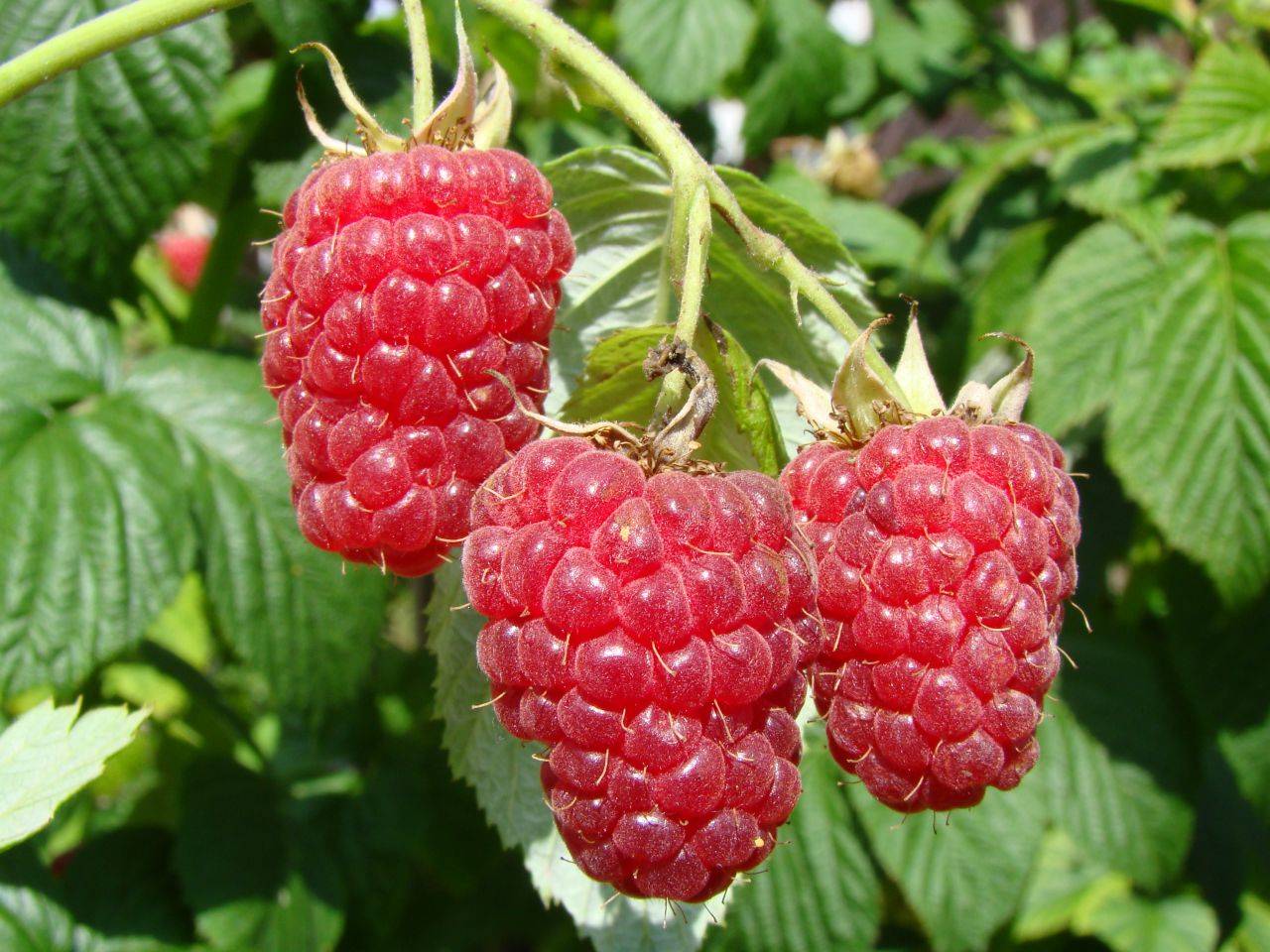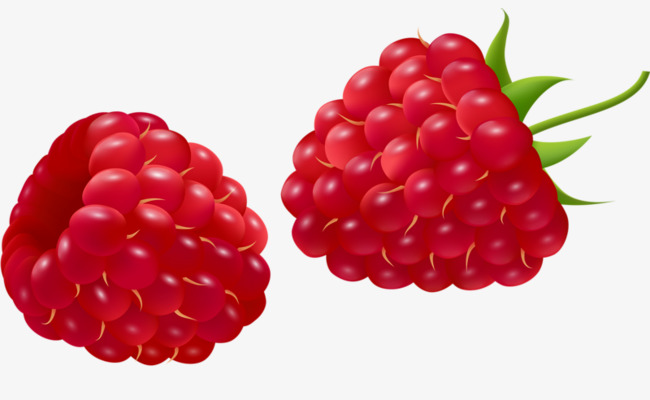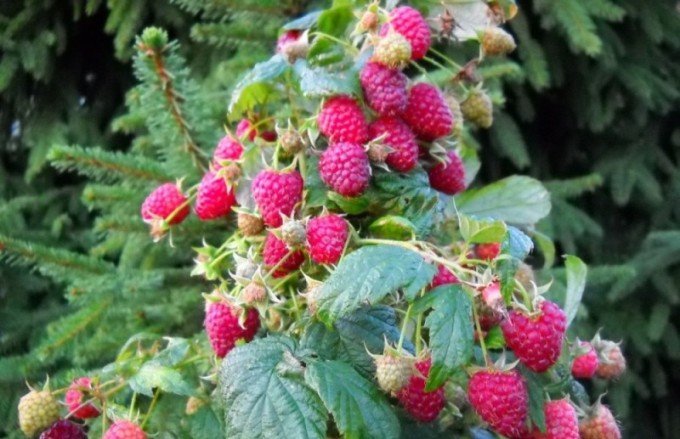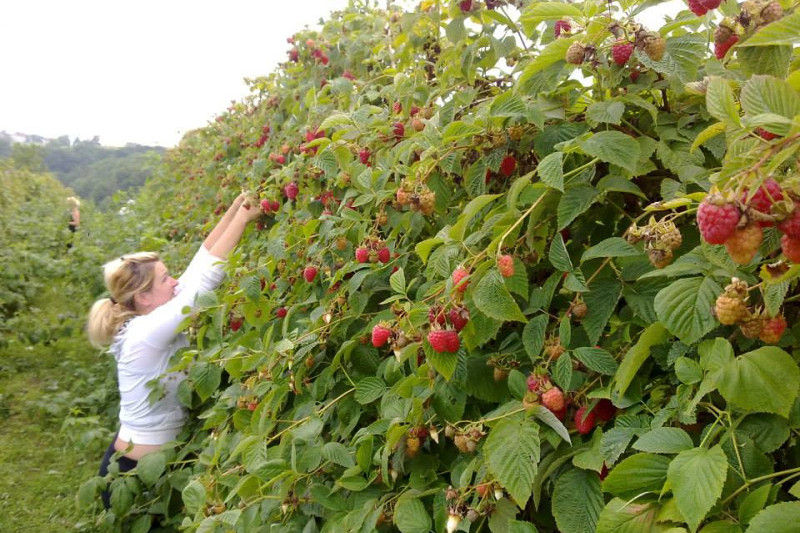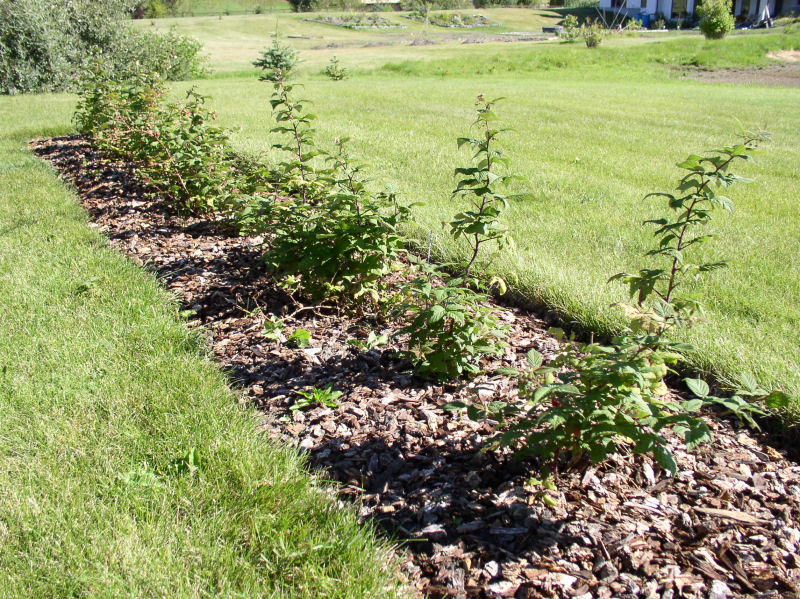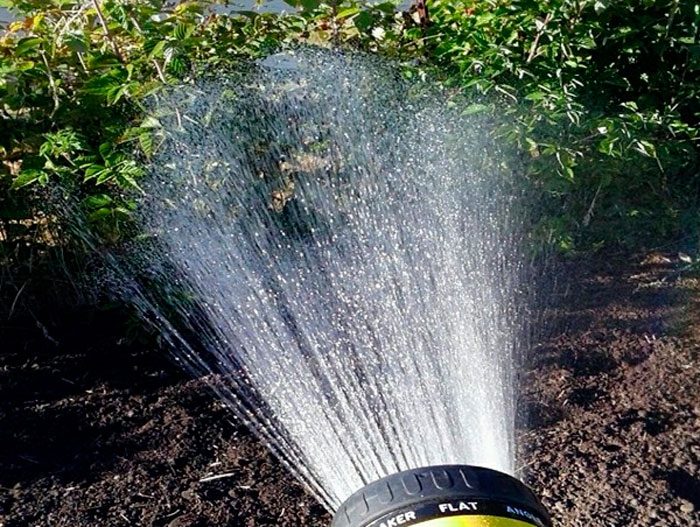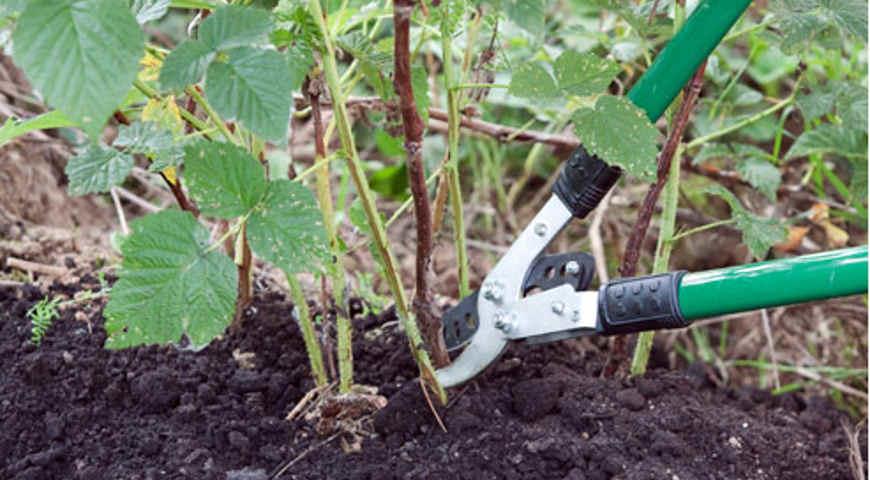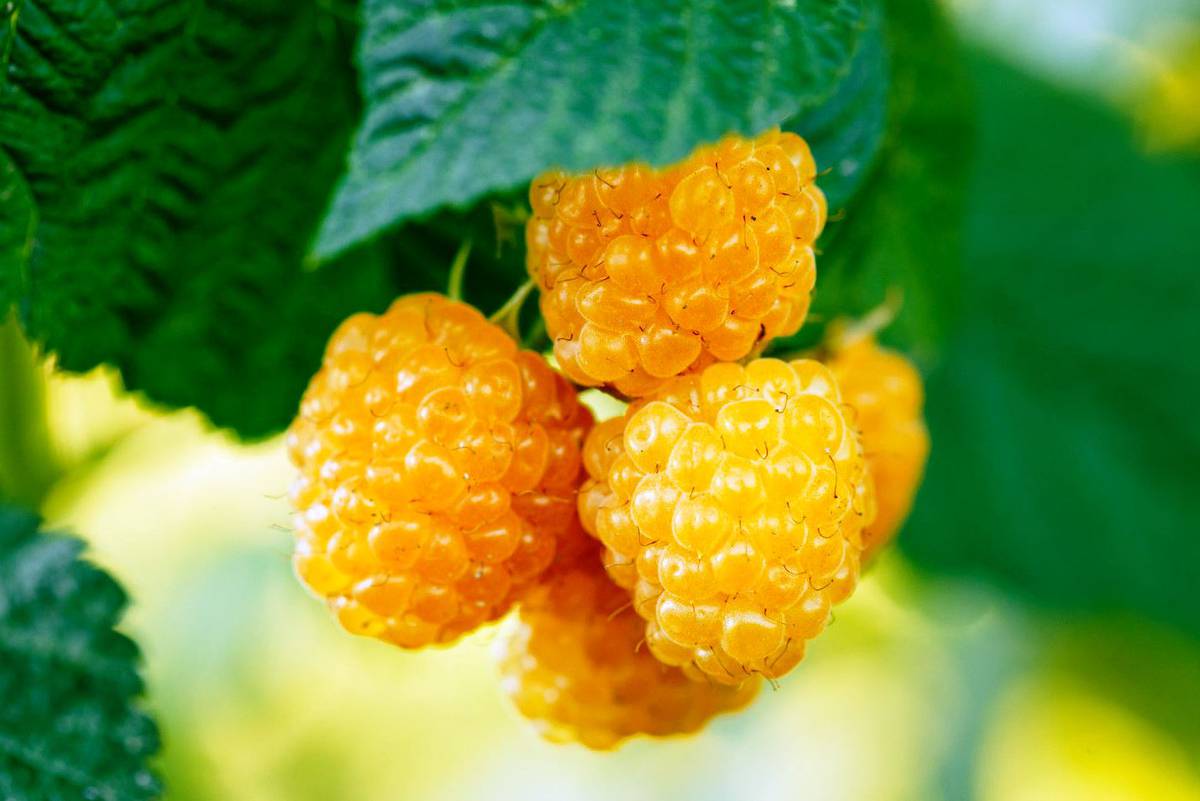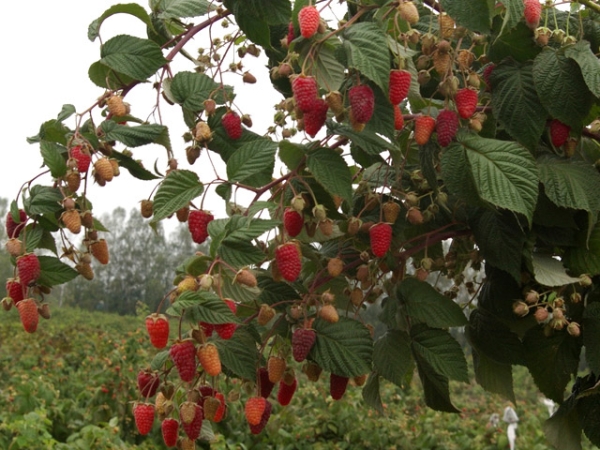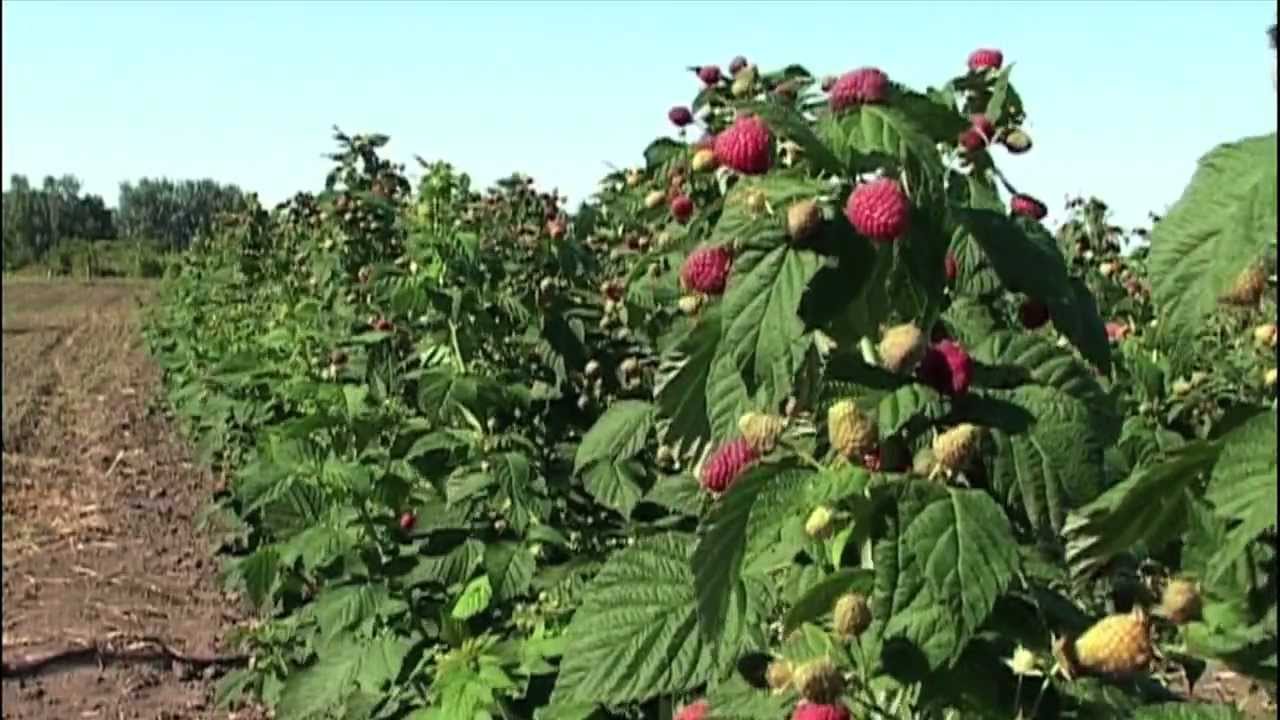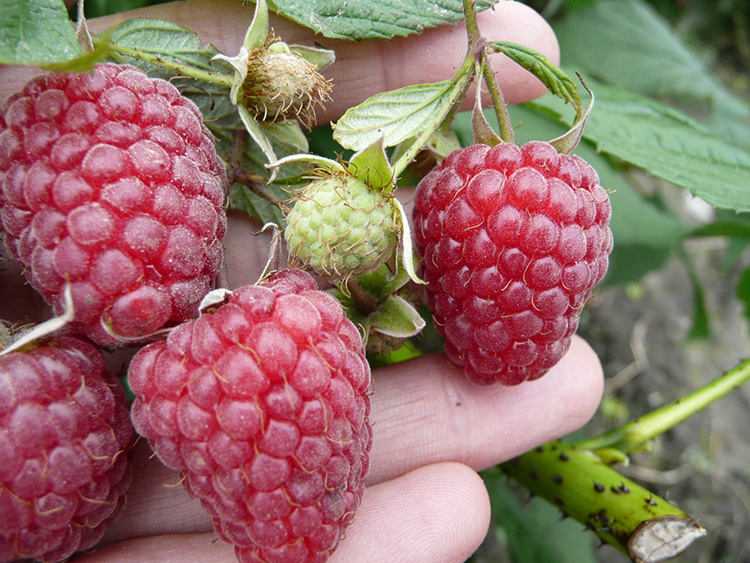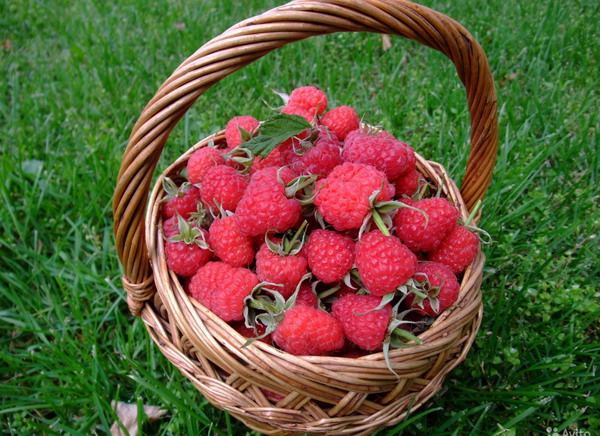Content:
The Rubus genus includes many types of berry crops known since ancient times. Among them there is also common raspberry (European), so beloved by gardeners, supplemented with hybrid varieties. In many regions, berries can be found in the wild, but not a single garden plot is complete without a raspberry tree.
Common raspberry: description
Almost everyone knows this berry “by sight” and will not be confused with any other culture. But once again, it does not hurt to make a description of the raspberry, mentioning the biological characteristics of the bush:
- it is a self-pollinating perennial plant;
- there are shrubs of various heights: from 0.5 m to 1.2 m, and some varieties reach 2 m;
- planting lives in one place for a quarter of a century, although it actively bears fruit for no more than 12 years;
- garden raspberries bear fruit every year, starting in the middle of summer, and give a good harvest with proper agricultural technology.
Each part of the bush requires a closer look. This will further help you understand how to plant raspberries and care for them correctly.
Root system
The rhizome is nothing more than a stem, but underground. Lateral roots extend from it in all directions. It is on them that buds are formed for future shoots. The rhizome is not inferior in length to the height of the bush, growing up to 1.5-2 m. The lateral processes are shallow - 10-15 cm from the surface.
The roots are actively developing, spreading from the main plant. Therefore, the raspberry quickly takes over the garden. If this is not stopped in time, you will have to fight with the berry, as a result, like a weed.
Escapes
The shoots of the culture are biennial. If this raspberry is not a remontant variety, then in the first year the stems only gain weight, stretching in height and compacting. Side branches do not appear on young shoots, so they do not bear fruit. But flower buds are laid, which "wake up" next year.
In the second year, in the spring, buds develop on the replacement shoots, from which lateral fruit-bearing branches grow. By the end of the season, these stems dry out and must be removed.
Berries
Raspberry fruits are a drupe of the prefabricated type. It is easily separated from the fruit, therefore, when ripe, it does not stay on the branch for a long time (although breeders have already developed varieties that are more resistant to shedding). It is the berry that is the part of the bush by which the grades differ: by their color, size, shape, taste and smell.
The fruits are a great source of minerals and vitamins. It is not for nothing that such science as pharmacognosy became interested in raspberries.
Specifications
When growing raspberries in a country house in the open field, not only every condition of agricultural technology is taken into account, but also climatic conditions, finding out how the culture reacts to cold and heat.
Most of the common raspberry bushes have a weak frost resistance and at a temperature of -30 degrees in winter freezes without shelter. Only in the southern regions the plant is not wrapped. In the northern regions, it is recommended to grow varieties with increased winter hardiness.
The culture does not like drought, especially the varieties released to Siberia. In the heat, the fruits will bake right on the branches or crumble without ripening. But at the same time, an excess of moisture is contraindicated for shrubs, due to which diseases develop.
The main varieties of common raspberries
Over the entire history of the culture, several hundred varieties have been created. These are both traditional species, which are found in almost every area, and new domestic hybrids. They differ in the size and color of the fruit. The classical division is based on the timing of the growing season, and it will be considered here. Knowing everything about raspberries makes it easier to make the right choice.
Raspberry early
| Variety | Berry | Bush | Specifications |
|---|---|---|---|
| Runaway | Up to 3.5 g, yellow-golden, conical, with a pleasant aroma and taste | Powerful, highly productive, no trellis needed | Good winter hardiness |
| Scarlet placer | Elongated, small, red, berry aroma | Medium height, half sprawling | Frost resistant and drought adapted |
| Arbat | Chiseled, red, 10-18 g each. | High (up to 2 m), slightly spreading, without pronounced thorns | Doesn't like winter |
| Valentine | Orange, medium in size, with extraordinary relish and scent | Erect, columnar, up to 2 m, almost no lateral growth | Firmly tolerates frost and is immune to disease |
| Glen Lyon | Raspberry, aromatic, with a pronounced sweet taste, up to 7-8 g. | High - up to 3-3.5 m, studless | Resistant to many diseases |
| Groove | Sweet, red, conical | Dwarf, barely 1 m, designed for patios and loggias | Frost resistant |
| Zeus | Conical, dense, carmine shade, with a dessert taste | Reaches a height of 2.3-2.5 m.Shoots have almost no thorns | Winter hardy, easily tolerates drought and disease |
| Delight Cascade | Delicate red, up to 4 g., With dessert qualities | Compact, tall, spatulaless | Unpretentious in the choice of soil, tolerates dry weather well and is not afraid of frost. When grown on large plantations, the method of mechanized harvesting is used |
| Bell | Red, sweet and sour, up to 4 g. | High (up to 2 m), requires trellis | Unpretentious to agricultural technology and has a high degree of frost resistance |
| Lazarevskaya | Sweet, with a raspberry flavor, elongated-conical shape, up to 4 g. | Medium, spiky | It tolerates the winters of the Middle zone well. It is attacked by beetles, but at the same time gives stable yields |
Among the early varieties, the following can be distinguished: Lel, Mishutka, Memory Shein, Purple, Early surprise, Sanka, Slava Russia, Zorenka Altai, Tatiana, Tulamin, Chelyabinsk yellow.
But the Arctic raspberry is not a bush, but a herb, up to 35 cm high. The small berry, indeed, resembles a raspberry and has the same sourness. But the aroma of Knyazhenika (this is the correct name of the culture) is close to pineapple.
Raspberry medium
| Variety | Berry | Bush | Specifications |
|---|---|---|---|
| Yellow dessert | Sweet, juicy, up to 2 g. When overripe, quickly crumbles | Maximum height - 1.5 m | Winter Shelter Required |
| Cumberland | Blackberry-shaped, round, black fruit, up to 2 g, with an unusual taste | Medium height | Winter hardy, gives good yields even in northern regions |
| Hussar | Sweet, ruby, cone-like, 4 to 10 g. | Tall, with strong stems that do not require a garter | Resistant to disease, dry climate and cold |
| Arched | Conical, red, with shine. Contains high amounts of vitamin C and sugars | Sprawling, thorny | Zoned for Western Siberia and has good disease resistance |
| Biryusinka | Rich crimson color. Large (up to 15 g), fragrant, with a pleasant taste | Two-meter shoots without thorns are densely covered with fruits | Good winter hardiness, shelter is rarely required |
| Willamette | Large, red-burgundy, conical, fragrant and tasty. Retains presentation for a long time | Prickly, high | Resistant to disease and high temperatures |
| Zorenka Altai | Sweet, red, rounded, up to 3 g. | Medium size | Has increased winter hardiness |
| Kaliningrad | Delicious, red, pubescent, conical, up to 4 g. | Spiny shoots are upright and tall | The main breeding is in plant protection products |
| Canadian | Very tasty and juicy. Stored for a long time without losing its qualities | Real raspberry tree | Can hardly tolerate high temperatures |
| Malakhovka | Intense red, with a purple tint, elongated, surprisingly tasty | Grows up to 2 m. Better to make a garter | All features of common raspberry are inherent |
Summer residents are also attracted by such varieties of the middle ripening period: Pineapple, Bulgarian ruby, Viten, Golden Everest, Daughter of Hercules, Red Queen, Marlborough, Maria, Reward, Old Gold, Orbit, Ottawa, Prelest, Ruby, Senator, Lilac fog, Modesty, Fantasy , Phenomenon, Yantarnaya Sadko, Kirzhach.
Raspberry late
| Variety | Berry | Bush | Specifications |
|---|---|---|---|
| Orange wonder | Juicy, sweet pulp, up to 8 g. | Tall - under 2.5 m | Cannot be grown in the shade, is afraid of drafts and requires shelter from frost |
| Polka | Brightly raspberry, thimble-like, with unusually sweet relish | Tall, with powerful stems | Stability of shoots, do not bend under the weight of berries |
| Tibetan | Small, acquires a sour-raspberry flavor and aroma only by the time of full ripening | Stunted, flowers and fruits are similar to strawberry | More often grown as an ornamental |
| Antares | Red, aromatic, conical, up to 7 g. | Slightly spreading, medium stature, slightly spiny | Frost-resistant, not afraid of diseases and pests |
| Anfisa | Large (up to 12 years old), elongated-conical, raspberry, with juicy pulp and fragrant aroma | Sufficiently productive - up to 5 kg of fruit can be taken from one bush | Average |
| Benefit | Dense, large, cone-shaped, red, covered with a slight coating, resistant to decay | Tall shoots are straight, without thorns | Good cost-effectiveness, frost and disease resistance |
| Golden Queen | Yellow, rounded, smells good and has a sweet taste | Compact, slightly spreading | Due to the ability to give berries until October, summer residents are mistaken for a remontant |
| Folgold | Yellow, sweet, with a pleasant aroma, up to 9-12 g. | Tall, with powerful branches | Resistant to pests, diseases and low temperatures |
| Maker | Sweet, aromatic, elongated, transportable | Strong, tall, withstands a load of berries without trellis | The land for the bush needs drainage. It is not picky about the rest of the conditions of agricultural technology, it is resistant to disease and cold |
| Rhinoceros | Sweet, tasty, bright raspberry, 13 g each. | 1.5 m each, compact, gives a small number of replacement shoots, no garter required | Does not spread over the site |
| Folgold | Yellow, sweet, with a pleasant aroma, up to 9-12 g. | Tall, with powerful branches | Resistant to pests, diseases and low temperatures |
| Maker | Sweet, aromatic, elongated, transportable | Strong, tall, withstands a load of berries without a trellis | The land for the bush needs drainage. It is not picky about the rest of the conditions of agricultural technology, it is resistant to disease and cold |
| Rhinoceros | Sweet, tasty, bright raspberry, 13 g each. | 1.5 m each, compact, gives a small number of replacement shoots, no garter required | Does not spread over the site |
It is also worth paying attention to such late breeding varieties: Brilliant, Brigantine, Glen Magna, Dorman Red, For Health, Octavia, Molling Promis, Mirage, Mulatto, Norwegian, Autumn Beauty, Tadmor.
Repaired varieties
| Variety | Berry | Bush | Specifications |
|---|---|---|---|
| Yellow giant | Juicy, up to 6 g., Sweet and sour | Height - up to 2.5 m | Requires compulsory shelter before winter |
| Bryansk miracle | Red, from 4 to 11 g, with an exquisite rich taste | Tall, with strong shoots | Zoning area - SVR |
| Hercules | Sweet, with pleasant sourness, raspberry, 7-10 g each. | Erect, slightly spreading, with powerful shoots that do not require a garter | Resistant to major diseases and ticks |
| Apricot | Large, orange, with a dessert flavor | Erect, compact (up to 1.4 m). Forms 4 to 7 shoots annually | Requires winter shelter |
| Augustine | Bright ruby, 3.5-4 g, tasty, resistant to decay and does not fall off within a week from the moment of ripening | At 1.5 m, capable of producing up to 4 kg of fruits per season | Standard |
| Brusvyan | Raspberry, up to 15 g, starting to acquire a taste only when fully ripe | Arboreal, under 2 m, strongly branched. Shootless shoots | Good frost resistance |
| Cardinal | Rich raspberry, medium-sized, with an amazing aroma and unique taste | On high shoots, thorns are present only in their lower part. | Tolerates illness and cold |
| Kwanzaa | Bright red, dense, up to 10 g. | Grows up to 2 m | Produces not only in the open field - in cold regions, a greenhouse is used for cultivation |
| Caroline | Large, sweet, raspberry | Tall | Private and industrial cultivation. Unpretentious to soil types, resistant to frost and root rot |
| Maravilla | Large, tasty, red, conical | Tall enough | Tunnel cultivation technology applied |
Remontants have become very popular due to their ability to provide double berry picking per season. To the indicated TOP-10, you can add the following: August miracle, Alyonushka, Alt Gold, Amira, Becker, Brusilovskaya, Galaktika, Generalissimo, Gold, Delbar Manifik, Zeva, Kalashnik, Kveli, Kupchikha, Marastar, Reliable, Nizhegorodets, Otumlon Kazakov, Pokus, Polesie, Russian Gardens, Nugget, Rival, Elegant, Erica.
Growing
Novice gardeners are wondering how to properly grow raspberries so that they give good yields. The approach to business begins with the study of the rules of agricultural technology.
Terms
Raspberries are a moisture-loving culture, but in floodplains where there is stagnant waterlogging, a berry plant should not be planted. An abundance of light is needed for active fruiting, but slight shading will not be an obstacle.
When deciding where raspberries grow better, they opt for sandy stones and loams with a weakly acidic reaction. Although the culture feels comfortable on other soils, if the soil is fertile enough. Proper cultivation of the site is the key to good rooting.
Landing
The main work on preparing the site for planting falls on the fall: a complex of fertilizers is embedded in the soil during digging. A year later, the bushes are planted in mid-September or early October (long before frost).
If you plan to plant in the spring and care for raspberries, then work as early as possible (before the main sap flow). The placement scheme depends on the method in which the raspberries will be grown (in a trench, pit, wheel).
Care
Growing raspberries and caring for them are two inseparable components of agricultural technology. Below are the basic gardening work that the summer resident should not ignore, so as not to provoke plant disease.
Top dressing
The main nutrition must be given to the roots, which are at a depth of 20 cm. The next season after planting, mineral water is added under the bushes. Then every 3 years they are fertilized with organic matter, followed by mineral nutrition again (the instructions are taken into account).
Watering
Cultivation is impossible without watering.
The step-by-step irrigation process looks like this:
- before budding;
- during the period of fruit ripening;
- after the main harvest;
- before preparing for wintering.
Bush formation
The main work that the gardener carries out at this stage is the removal of biennial shoots that have already completed their "mission". In the fall, they are cut completely at the root, without leaving even hemp.
In spring and summer, several pruning is carried out, destroying the growth so that it does not take away food from the main stems. Replacement shoots that appeared last year and left for fruiting are shortened to the first living bud.
Preparing for winter
The raspberry bush should not be left without shelter for the winter. At the same time, the shoots that should reproduce next year are bent to the ground, and the old ones are cut off completely. Insulating material can be dispensed with only in the southern regions where winters are mild. In areas with a harsh climate and little snow, it is necessary to organize snow retention on the site.
Breeding
Reproduction of raspberries is carried out in all available ways, but only breeders use the seed. With one mature shrub on the site, it is easy to breed an entire plantation using root suckers or cuttings. When the time comes to transplant the bush to a new place, it is divided into 2-3 parts, each of which has its own hole (it is good if a tire or tire is laid along the edge, as the famous gardener Sobolev recommends).
Raspberries, which are properly planted and cared for, always produce large, juicy, sweet berries. Therefore, it is important to know how to grow raspberries. Starting to discover new names for yourself, you need to carefully select varieties. So, some are looking for balsa raspberries, but in fact this is a completely different plant that has nothing to do with berries.
